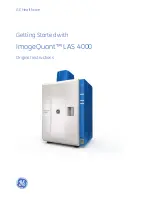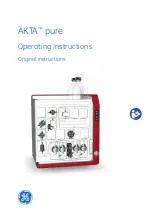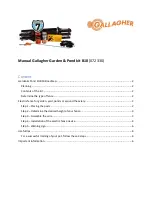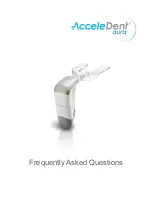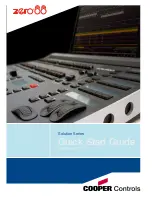
Operator's Manual
WP700Zi-OM-E-RevA
464
analyze: for channel emulation methods the start marker should always be near the beginning of the VCO Synch
field. However, even 0.1% speed variance becomes 0.8 s of jitter after 8 ms of delay. That is probably several
hundred bit cells (far more than Analog Compare can compensate for) which may cause the channel emulation
methods to miss the VCO Synch field entirely. Therefore this technique will not be able to look at sectors more
than 1 or 2 ms delayed from Index.
If Read Gate is unavailable and you want to look at something other than sectors of data on the head signal,
some repetitive signal such as Servo/Data can be used as Read Gate. Analog Compare will have to be used
then. The SMART Trigger can be set up as outlined
previously
, except that the bottom
Qualify by:
field should be
set to time greater than
, and the amount of time from index to just before the data of interest should be
entered. This can be used to look at a particular servo burst, for example.
Automatically Shown Traces
When the source of the head signal is changed from
None
to an input channel or memory, a trace showing a
zoom of the head signal is automatically created and displayed. If the
Filter head signal
checkbox is checked,
the data in the trace is filtered. All channel markers selected will appear on this trace. All channel analysis
methods analyze the (possibly filtered) data in the trace waveform (the entire waveform, not just the part
displayed).
Byte
offset and
Worst Error #
change the horizontal position of this trace.
When
Store Reference
is selected, a trace showing a zoom of the stored reference is automatically established
where possible. This means that whenever
Byte
offset or
Worst Error #
is changed, the reference will be
realigned with the Head Signal at the new position. The reference signal will also be filtered if the
Filter head
signal
checkbox is checked.
Setting Bit Cell Time
The value in the bit cell time menu is used as a starting guess for analyzing VCO Synch. It is also used by Byte
offset and Analog Compare to determine how much time a byte occupies, and to set the -3 dB frequency of the
DDA’s equalizing filter (if enabled). It should be set correctly for the zone being read; it does not need to be set on
each read within the same zone.
Changing the bit cell time changes the filter’s -3 dB frequency. The filter’s settings should therefore be updated, or
"trained" after the bit cell time has been changed. If the filter is on, the bit cell time must be fairly close for
Find Bit
Cell Time
to work.
Retraining the Filter
Training the filter adjusts the boost and the -3dB frequency to optimize the mean of the worst 100 SAM values.
The training starts by setting the -3dB frequency to 0.5/bit cell time. It then alternates optimizing the boost with
optimizing -3 dB frequency. The 3 dB, boost and group delay values can also be independently set without having
the DDA automatically train.
Choosing an Analysis Method
Which method or methods should be used? Deciding this depends on the type of problem and the information
available.
By definition, a data error occurs in a drive when a bit is interpreted as a "1" when it should be a "0" or vice-versa.
In order to gain insight into the cause of the error, it is generally desirable to examine the head signal at the
location or locations where data errors occur. The DDA provides tools to help identify the likely location of a data
error. In addition, with the instrument’s channel emulation capability you are able to gain further insight into the
cause of an error or errors once location is determined.
Before choosing a method, there are some basic questions that need to be answered:
x
Is the byte position of the error known?
x
Is a reference signal easily available?
x
Is the error repetitive or intermittent?
Recommendations on the appropriateness of each analysis method are provided below.
Analog Compare
Analog Compare is the most general of the channel analysis methods, since it can be applied to all parts of the
head signal, including VCO Synch, servo burst and data field. It is recommended for identifying the location of
Содержание DDA 7 Zi series
Страница 1: ...Operator s Manual WavePro SDA and DDA 7 Zi Series Oscilloscopes ...
Страница 2: ... L R R H HUD RU D D ...
Страница 41: ...Operator s Manual WP700Zi OM E RevA 40 The detachable WavePro Zi front panel ...
Страница 376: ...WavePro 7Zi 375 WP700Zi OM E RevA Absolute Offset Relative ...
Страница 439: ...Operator s Manual WP700Zi OM E RevA 438 ...
Страница 440: ...WavePro 7Zi 439 WP700Zi OM E RevA ...
Страница 544: ...Thank you for purchasing a WavePro SDA or DDA 7 Zi Oscilloscope ...
































